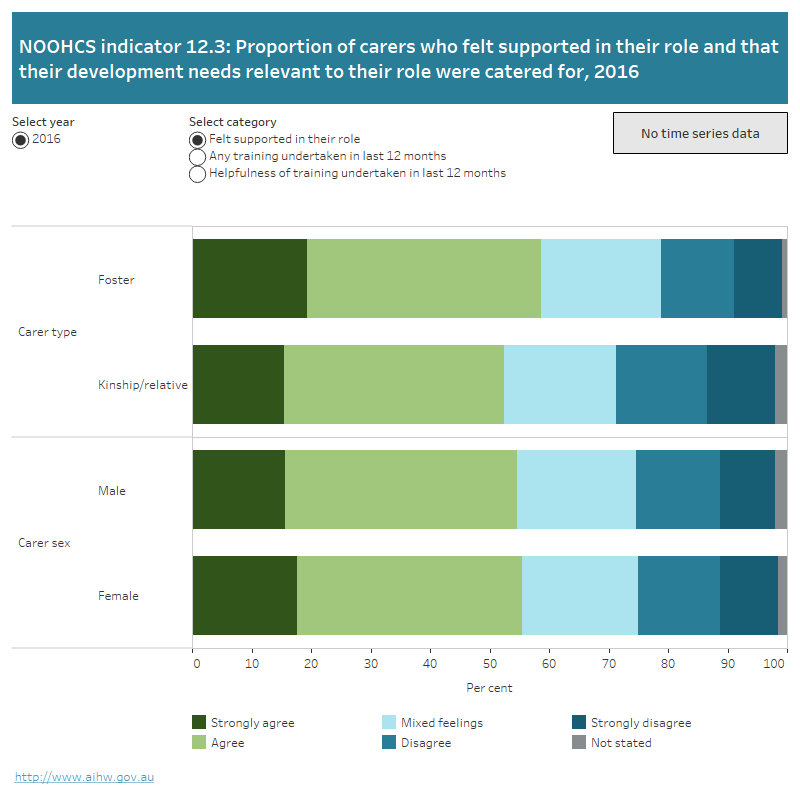12.3 Carer support
Foster and relative/kinship care are two types of formal care arrangements provided to children who are unable to live with their families. In the context of relative/kinship care, a relative does not necessarily denote a family blood relation. These carers receive training and support to help them deliver the best care possible in often complex circumstances. Meeting the needs of carers is expected to help meet the needs of the children in their care.
This indicator uses results from a national study of foster and relative/kinship carers of out-of-home care children under the age of 18 years. The survey focused on foster and relative/kinship carers who were registered as a formal carer as at 31 December 2015. Participants responded to questions relating to carer training and development, support services and the perceived usefulness of training and services.
Trend data: For all indicator displays, the yearly trend is limited to indicators with 3 or more years (including the current year) of comparable time series data. To see the trend click on “Yearly Trend” button on the display. Where 3 or more years of comparable data including the most recent year is not available, a “No time series data” message is shown on the display.
The horizontal stacked bar graph shows the proportion of carers who felt supported in their role and that their development needs relevant to their role were catered for in 2016. Each stacked bar presented the proportion of carers who agreed, had mixed feelings or disagreed (or not stated) with feeling supported. Data are disaggregated by carer type and carer sex. Data can be selected by the category of support reported.

Source: AIFS Working Together to Care for Kids: A survey of foster and relative/kinship carers 2016.
See the supplementary data tables for further information and footnotes about these data.
Indicator technical specifications
The information below provides technical specifications for the summary indicator data presented in the quick reference guide.
|
Definition | Data source |
|---|---|---|
| Numerator |
|
AIFS Working Together to Care for Kids: A survey of foster and relative/kinship carers 2016 |
| Denominator |
a,b. Number of carers (foster carers and kinship carers) who had at least one child in care under the age of 18 living with them at 31 December 2015 c. Number of carers (foster carers and kinship carers) |
AIFS Working Together to Care for Kids: A survey of foster and relative/kinship carers 2016 |
Explanatory notes
The aim of the Working Together to Care for Kids study was to provide a better understanding of the characteristics and needs of the carers of children who are living in out-of-home care in Australia.
The population for this study was foster and relative/kinship carers who were registered as formal carers in state and territory departments responsible for child protection across Australia, and had at least one child under 18 years of age in out-of-home care who was living with them at 31 December 2015. The population definition applied to all jurisdictions except the Northern Territory. The Northern Territory did not participate in the study.
Most questions relating to children who were placed under the carers’ care were directed in relation to one child (referred to as “study child” or “study children”).


